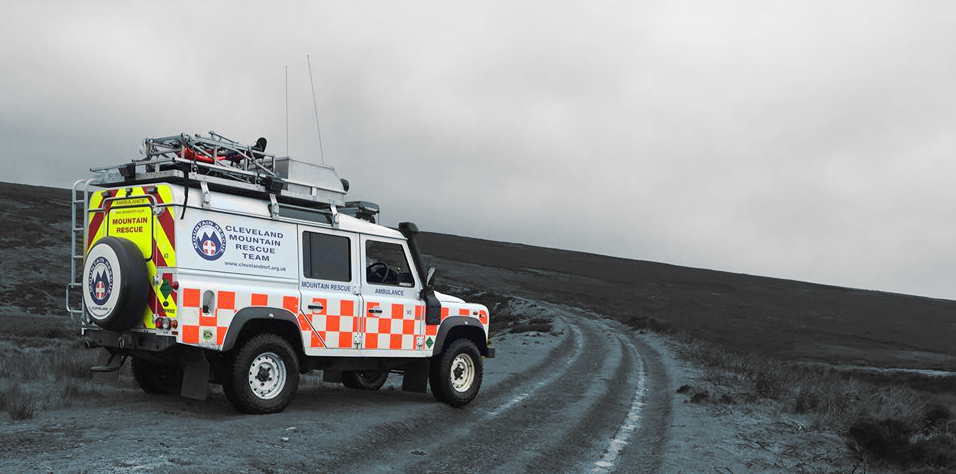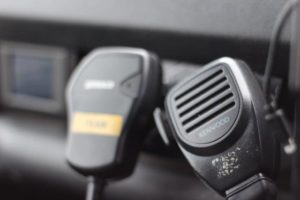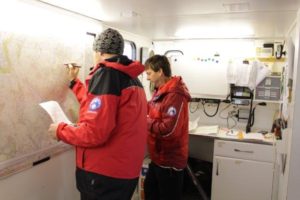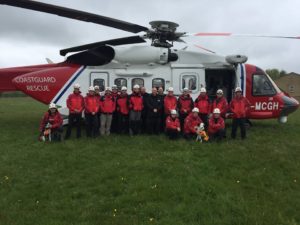
As outdoor enthusiasts we spend a lot of time in the hills enjoying the variety and diversity of the terrain available. Most of the time we finish our activities back at home or in the pub with friends telling new stories and creating lasting memories. But in the event it does not end so well do you know what to do? Every year 1000’s of rescues and searches are conducted by volunteer search and rescue teams. The majority of these rescues are initiated by people who set out to enjoy an activity in the hills just like us!

 Apart from the basics of First Aid and keeping the person warm and sheltered you need to decide if you can safely get the person off the hill. Despite what we are taught in Mountain Leader training about improvised carries, it is nigh on impossible to carry an adult down a mountain side. Mountain Rescue teams use a minimum of 8 trained volunteers when using a stretcher to get get people off the hill. Next step is to contact the Emergency Services.
Apart from the basics of First Aid and keeping the person warm and sheltered you need to decide if you can safely get the person off the hill. Despite what we are taught in Mountain Leader training about improvised carries, it is nigh on impossible to carry an adult down a mountain side. Mountain Rescue teams use a minimum of 8 trained volunteers when using a stretcher to get get people off the hill. Next step is to contact the Emergency Services.
If you are unsure whether an ambulance or paramedics could reach you then need to call out mountain rescue, first make a note of all relevant details:
Dial 999 or 112, then ask for ‘Police’ then ‘Mountain Rescue’.
Give all your prepared details of the incident and STAY WHERE YOU ARE until contacted by the rescue team. If you have to make a further 999 call, follow this procedure in full again.
If you have hearing or speech difficulties, you can contact the 999 emergency services by text. You will only be able to use this service if you are registered with emergencySMS first, so register now — don’t wait for an emergency! Text ‘register’ to 999 then follow the instructions sent.
In an emergency, contact the emergencySMS service by texting 999. Your message should include ‘Police’ + details of incident + location.
We covered some details above that you will be asked by the operator when you call 999 or 112.
A good place to start is with the acronym ATMIST:
|
A |
Age and other casualty details |
e.g. 20 year old male |
|
T |
Time of accident |
13:30 |
|
M |
Mechanism |
Fell 20m from a scramble |
|
I |
Injuries (Illness) sustained |
Head injuries |
|
S |
Signs |
Confused, aggressive, bleeding scalp |
|
T |
Treatment & Trends |
Have stopped bleed with bandage. Starting to go drowsy |
Other useful information includes:
Often you will be asked other questions by the call operator including about your equipment and food and drink, or the battery life on phone.
After speaking to the call operator, the phone call will be terminated and then if you have a signal expect a phone call from a team member who may well ask you the same questions as well as others.
If possible SAMPLE is also useful to pass on to the team when they get back to you:
|
S |
Signs and symptoms |
|
A |
Allergies |
|
M |
Medication |
|
P |
Past history of this medical problem or others |
|
L |
Last time ate or drank |
|
E |
Events |
Most UK teams now use the SARLOC system, and whether they manage to speak to you or not they will send you a text and ask you to click on the internet link if you have a Smart Phone. This allows the link to interrogate your phone’s GPS and it then shows your location to the team in digital mapping. This has saved a lot of time!
 In the event that you have no phone signal at all or that the visibility is extremely poor and so the rescue team who are trying to locate you in the mist are struggling, a whistle is a must.
In the event that you have no phone signal at all or that the visibility is extremely poor and so the rescue team who are trying to locate you in the mist are struggling, a whistle is a must.
The accepted international Distress Signal is 6 blasts on the whistle, and then the response from someone who hears it is 3 blasts on the whistle. However very few people actually know the IDS and usually any blasts on the whistle tend to be phoned in to Mountain Rescue, so don’t worry if you can’t actually remember the exact numbers. Again at night torches can be used to attract attention. The proper method is again 6 flashes but some people remember morse code better than the IDS (and again often rescue teams are phoned by someone who has seen torch lights on a mountain side or ridge when in fact the people using them are perfectly fine and enjoying a night walk).

Mountain Rescue members are all volunteers and this means that from the point of your phoning 999 or 112 a sequence of events happens. Firstly the phone operator will initate contact with the nearest local team leader or call out officer. The mountain rescue team member will analyse the details and likely try to phone the informant to investigate the incident before deciding to call the team (unless it is obvious from the initial information that it is a life and death situation.) The team members then may have to leave work or whatever they are doing to head across to their team base or to the designated RV (10 – 1hr). From there, depending on access to a helicopter, and seriousness of injury they will then drive as close as they can (20 minutes) using specialise team vehicles equipped as ambulances, before the team then continue on foot (up to 1 hour or more depending on location).
The above timings are not set in stone as it depends how many team members arrive and how quickly as well as the urgency of the callout etc., but it gives you some idea of the response time.
So make sure you and the casualty are wrapped up warm and dry!
The red and white Coastguard Helicopter is now becoming as familiar a site across the skies of the UK mountains as the yellow RAF Sea King was.

Where there are a lot of people don’t wave at the helicopter for attention as loads of people wave at them! Raise both your arms and hold them up to create a Y with your body (this represents a YES, as in yes I need help).
The Sikorski S92 is a much larger machine than the old Sea King, with a stronger downdraft (around 60 mph) which is phenomenal. If you have been informed by the rescue team that the helicopter is coming in for you, then you really will need to batton down the hatches as the downdraft is strong enough to send rucksacks and humans flying. It is worth tying rucksacks together and get someone to sit on them.
If you are on a steep slope the chances are that the helicopter will do a very long winch down to you to try to prevent as much downdraft. If you see anything dangle from the aircraft DO NOT try to grab it. The first cable down is a discharger for static build up.
Allow the winchman to sort himself out. They are well used to it!
If your casualty is in a group shelter you will need to remove it before the helicopter is close as this could fly up into the exhaust as can other loose objects such as hats. Remove hats or make sure your hoods are fully fastened. You may need to be careful of grass and grit being blown into your eyes.
Make sure you if you are in a group and the casualty has the car keys that someone who is staying on the mountain has got now got those.
At night DO NOT shine your torch directly at the aircraft to get attention. They are using night vision and your torch can cause intense light which blinds the pilots’ vision temporarily.
Most teams will accompany you down the mountain if your casualty was part of your group (and especially if they were flown off to hospital). They may well take you back to their base to warm you up and offer you a hot drink and comfort before giving you the directions to the hospital, if needed.
Applications can be made to join the team in a support role (Operational Support) or as a hill going (Search and Rescue) member.
Applications for either role can be made at any time. Intakes for Operational Support members occur at various times of the year. There is one annual intake for Search and Rescue normally each September.
Join NowThis message is only visible to site admins
Problem displaying Facebook posts.